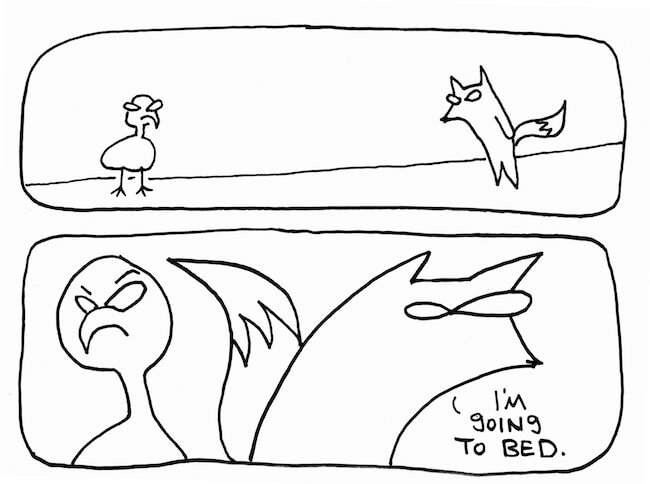By Christi Furnas
 I’m an artist living with schizophrenia. I’ve been open about my illness since it began. I’ve painted my hallucinations, spoken on panels and with the press. Since I gravitate to drawing my experiences, the progression to creating a graphic novel felt natural to me. Still, for many writers with disabilities, the process of adding illustrations to prose could feel like a daunting task. While putting a graphic novel together takes time and dedication, with a little planning, it can be done. Here are a few tips to consider if you are contemplating this form of storytelling.
I’m an artist living with schizophrenia. I’ve been open about my illness since it began. I’ve painted my hallucinations, spoken on panels and with the press. Since I gravitate to drawing my experiences, the progression to creating a graphic novel felt natural to me. Still, for many writers with disabilities, the process of adding illustrations to prose could feel like a daunting task. While putting a graphic novel together takes time and dedication, with a little planning, it can be done. Here are a few tips to consider if you are contemplating this form of storytelling.
Tip 1: Get feedback
I talked about my illness for years before I wrote any of it down — like beta testing, one could say. I’m also queer, and sharing about life with schizophrenia was a lot like coming out of the closet. Once out, I was out. Then I started putting it to page.
I shared my graphic novel idea with friends. They loved it. Friends always do, it seems. Positive feedback is important. It keeps me going. While I know that my friends are biased, I pay careful attention to what they understood, and learn from their reactions.
Tip 2: Set boundaries
You must ask yourself, what am I comfortable revealing? A lot of disabilities are more visible than mental illness, but not everything is easy to write about. Like any memoir writer, you need to decide what you want to put out for the world to see.
Tip 3: Fine tune your sketches
While I’ve told my stories many times, writing them out wasn’t easy. I’m a visual person, so I tried to first draw the whole thing. It didn’t work. I had to adjust the form I wanted my story to live in. I developed the style of pictures and how they reflect my words. If you’re not comfortable with drawing, this is the point when you would look for an illustrator. You would look for someone whose style of drawing fits the personality of your story.
Tip 4: Finance your graphic memoir project
I wrote a grant proposal. This forced me to clarify my story idea. It also pushed me to create an outline and to build a process, and my process was bullet points and lists. I made a list of what happens in the chapters. Sounds easy, huh? I’m tricking you. It’s not. But it was the easiest way for me to move forward with my project. This is where I tried to figure out the story’s arc, the beginning, conflict, climax and resolution.
I know this process seems obvious. Yet it was the grant application that got me to focus. I needed to know what I was going to draw before drawing it, and the questions got me to follow a path. As I got organized, I found that it’s easier to backspace on a computer than ink on paper. Even drawing digitally, I suggest writing first. Initially, my writing looked more like a sloppy script than a polished manuscript, but it was for my eyes only. My first draft had ten chapters. My sixth draft had seventeen.
Tip 5: Find a mentor
The grant allowed me to work with a mentor. Our first meeting, he asked me to explain my story. I did, yet he had no idea what I was talking about. I had to develop a pitch that summarized my graphic novel in no more than three sentences.
Here’s what I came up with for my graphic novel: Crazy Like a Fox: Adventures in Schizophrenia is about a fox trying to survive their first year with the diagnosis. I pull from my experience of symptoms, visiting hospitals, being betrayed, and becoming homeless. I use humor to approach a difficult subject.
While finding a mentor isn’t easy, another option is to have a more seasoned graphic novelist available to run questions by. In some cases, this may have to be a consultant you hire.
Tip 6: Create a drawing schedule
This is tedious, but my favorite part. Having a regular time to work on my drawings helped me to dive deep into the project. It made it possible to build relationships with my characters. For instance, my protagonist is named Fox. The doctors are drawn as sock puppets. Fox’s nemesis is a dodo bird. I chose to draw creatures and not people because it added a comedic element, it’s fun and it fit the story. This process also helped me realize that words should not describe what happens in the pictures. They need to add something that’s otherwise missing.
Tip 7: Edit your work
I had written the screenplay, had hired the actors, now it was time to direct! Look at your panels and think of different camera angles. See? I told you it’s not easy. Every page and every panel within the page is a composition. When I edit my drawings, I take into account how things are arranged on the page. People read pictures left to right, top to bottom. People pay attention to the words more than the pictures. So be sure your word bubbles are placed so it’s easy to tell in which order to read them. I learned to have consistent handwriting. I wrote every letter in uppercase except the letter “g” because I don’t like the way capital “G” looked. Some computer programs allow you to type the text, I didn’t go high-tech.
Tip 8: Put together a review team
I got a second, third and fourth opinion. I had friends read my thumbnails. I joked that I was writing a book by committee. That’s not accurate. I love show and tell. I love hearing the LOLs. I know I’m doing something right.
This part of the process helped a lot with my first draft. It made me realize that my drawing and storytelling style had changed since I started the project. For example, there were characters that deserved some background information, like why is Fox’s nemesis so mean? I had to rewrite and redraw to make the book more cohesive. So, yes, I sat down and drew the whole thing over with changes — one page at a time.
The bottom line
Putting together a graphic novel or memoir takes a lot of time and dedication. And in closing, I encourage anyone attempting this storytelling form to not look at the first draft as the final one. I learned that from all the writers I’ve known over all the years. It’s like painting in layers. It takes patience but in the end, you’ll have something beautiful to share with the world.
Christi Furnas is a queer cartoonist, illustrator, oil painter, and disability advocate living with schizophrenia. She has exhibited in galleries across Minnesota and in New York. Her mini-comic Crazy Like a Fox: Adventures in Schizophreniahas sold locally, nationally and internationally. She currently lives and creates in Minneapolis with her wife, two cats and dog. You can learn more about Christi’s work at www.christifurnas.com.
